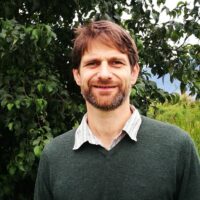One Planet Living reaches Florida
As international negotiators continue to try and deliver meaningful climate action, local initiatives continue to proliferate, and especially those that are based on a culture of collaboration.
Building on Bioregional’s current work to enable city-regions to develop collaborative, transformative sustainability action plans using One Planet Living framework, we've started two smaller-scale pilots in Florida: at New Smyrna Beach and Anna Maria Island.
Funded by Visit New Smryna and the Bradenton Area Visitors Convention Board respectively, the project aims to create a shared ‘One Planet Vision’ for each area, and then specific action plans outlining what the projects can do to support this vision.
To kick-start the project, in November I ran a 2-day training and workshop with the key local actors in each location. I was inspired by the range of activity that was already happening.
In Anna Maria island, centred around the traditional high street of Pine Avenue you can see examples of a solar-powered business district, a pioneering sustainable seafood restaurant, edible landscaping, permeable pavements, LEED platinum housing, independent shops… the list goes on!
New Smyrna has a similar core of independent shops and sustainably minded fish restaurants as well as impressive conservation efforts such as the Marine Discovery Centre’s re-naturalised wetlands. In the neighbouring city there’s even a local sunglasses manufacturer that is selling a range of sunglasses made out of recycled fishing line collected from the ocean.
Excitingly a number of these organisations, including two restaurants Sandbar and Thirdwave, have already created and published their One Planet Action Plans (viewable on
oneplanet.com), and the process has created more collaboration between the restaurants and the hotels. Oneplanet.com is a new digital platform designed to make it easier to create and share sustainability action plans.
I also had the opportunity to speak at the ‘Sharing Our Research with Everyone’ (Shore) conference. It was an honour to share a stage with Markus Erickson of the 5Gyres Institute, whose madcap adventures have helped to highlight the impact of marine plastic on the oceans. He provided a very clear and practical analysis of how to tackle the issue of ocean plastic, namely: zero-waste communities, circular economy businesses and shoreline clean-ups.
All the while we were overlooking the estuary where dolphins were jumping and there were even manatees – though unfortunately I didn’t see one!
By far and away the most impactful presentation was an emotional talk by a local fishing captain explaining how huge algal blooms were wiping out the sea-grass and the other foundations of the lagoon ecosystem. Central Florida surprisingly contains some of the nation’s largest cattle-raising feedlots (for intensive beef production) and is home to significant sugarcane agriculture. The run-off is having a massive impact on coastal ecosystems ranging from local algal blooms that reduce visibility and cause the vital sea grass to die, to widespread ‘red tides’ that kill almost all sea life and make the seafront inaccessible to humans.
This is the first time I’ve seen so directly and clearly the connection between our diet and ecosystem degradation.
The challenge is now to make this connection apparent to the of the local population who are also horrified by the damage to the ecosystem, but don’t yet understand the impact of their own behaviour.
And this is what we hope to do through this project. By creating a platform for collaboration and communication we aim to harness local expertise and enthusiasm to scale the positive impact that these organisations area already having – and highlight how our individual choices can help enhance the local ecosystems.
Learn more about our easy-to-use sustainability framework One Planet Living.
One Planet Living goals and guidance for cities and regions
This document is for anyone who wants to help their city or region transform into a truly sustainable one
Download PDF








